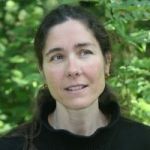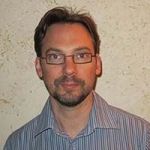Session
Protected mountain areas: territories as an interface between science and management
Cité des Territoires - Université Grenoble-Alpes
Du 12/01/2017 au 12/01/2017

The history of mountain protected areas is characterized by the resort to several registers of legitimacy over time. Their creation was initially often justified by their capacity to act as microcosms and represent the world because of the presence in these areas of a variety of species and habitats. Many of them later conforted their action by mobilizing the register of exceptionality symbolized by the protection of a few iconic species and landscapes. These two registers are currently being fragilized by the emergence of concepts such as ordinary biodiversity, preservation of ecological functionalities, and dynamical stewardship of biodiversity in a context of adaptation issues raised by global changes. This has contributed to the emergence of a new register of legitimacy: that of reference territories diversely influenced by human activities. Mountain areas, then, are presented as interfaces between science and management that allow a long-term monitoring of biophysical as well as socio-economical evolutions.
The session will aim to investigate the practical modalities of interface between science and management on mountain territories by documenting and analyzing a diversified set of experiences, models and methods deployed in French and foreign protected areas, notably in the Alpine range :
- overview of existing ways of interfacing science and management (scientific councils, LTSER sites, collaborative research programmes, co-funded PhD projects, …), their practices and postures and their added value both for knowledge production and nature and land management.
- focus on scientific councils.
- comparing so-called “sentinel programmes” (“Sentinel mountain pastures”, “sentinel lakes”, “sentinel huts”, etc.) genesis, functioning and outcomes (in terms of knowledge, collectives, actions).
- questionning the complementarities, synergies and/or tensions between these different ways of interfacing science and management and draw conclusions on the factors of success for establishing partnerships between scientists and protected area managers.
Thursday 12 January
|
||
| Séquence 1 14h00 - 15h40 Organizing the exchange between scientists and managers Modérateur : Isabelle Arpin, Rapporteur : Thomas Scheurer |
Comprendre les trajectoires d’intégration des aires protégées : le cas de deux réserves naturelles haut-savoyardes (Understand integration pathsways of protected areas: the case of two alpine nature reserves) THERVILLE Clara, UPR GREEN, CIRAD ; HORON Franck, Asters, CEN Haute-Savoie; BIORET Frédéric, EA 2119 Géoarchitecture, Université de Bretagnei Occidentale; MATHEVET Raphaël, CEFE UMR 5175 , CNRS |
|
| Deux conseils scientifiques pour une même animatrice : analyse des échanges socio-professionnels autour de deux interfaces entre science et action. (Two scientific councils for one facilitator : an analysis of socio-professional exchanges around two interfaces between science and action.) RONSIN Gaëlle, Université de Grenoble-Alpes - Labex ITEM - IRSTEA - EDYTEM ; BIRCK Carole, Asters, Conservatoire d'espaces naturels de Haute-Savoie |
||
|
La recherche-action participative dans le Grand Site de France de Bibracte - Mont Beuvray, un laboratoire de la fabrique territoriale par la médiation du paysage dans le Parc naturel régional du Morvan (The participatory action-research in "Grand Site de France" of Bibracte - Mont Beuvray, a territory-lab with landscape mediation in natural regional Parc of Morvan) DARROUX Caroline, Anthropologue indépendante - Conseil scientifique du Parc naturel régional du Morvan , GUICHARD Vincent, Directeur EPCC Bibracte, THIÉBAULT Olivier, Chargé de mission Paysage - Parc naturel régional du Morvan , JANIN Claude, PACTE, Université Grenoble-Alpes |
||
| Mise en oeuvre d’une interface innovante entre chercheurs et gestionnaires pour la gestion d’une crise d’instabilité gravitaire en espace protégé de montagne : l’exemple du Mont Granier en 2016 (Réserve naturelle des Hauts de Chartreuse, France). (Implementation of an innovative interface between researchers and managers to manage landslides events in mountain protected area: Example of the Mount Granier in 2016 (Nature Reserve of Hauts de Chartreuse, France). ) HOBLEA Fabien, EDYTEM, Université Savoie Mont Blanc; BARNAVE Suzanne, Réserve Naturelle des Hauts de Chartreuse; BRUN Jean-Jacques, Equipe Ecosystèmes Montagnards, IRSTEA Grenoble; AMITRANO David, ISTERRE, Université Grenoble-Alpes; LAÏLY Bruno, , Service de Restauration des Terrains en Montagne (RTM) de l'Isère, Office National des Forêts |
||
| PAUSE - 15:40 - 16:00 | ||
| Séquence 2 : 16h00 - Directs interactions between scientists and managers Modérateur : Arnaud Cosson, Rapporteur : Isabelle Arpin |
Intégrer la biodiversité des forêts matures dans les projets de territoire (Integrating mature forests biodiversity in territory management) FUHR Marc, UR Ecosystèmes Montagnards, IRSTEA ; PACCARD Pierre, Parc naturel régional du Massif des Bauges |
|
| Des savoirs divers à l’action : la Conférence des acteurs de la Façade maritime occidentale du PNR de Corse. (From various knowledges to action : la Conférence des acteurs de la Façade maritime occidentale du PNR de Corse) MOUNET Jean-Pierre, UMR PACTE, UGA; SIMEONI Pasquale, PNR de Corse |
||
| Convention « chasse - connaissance » : un marqueur de l’évolution de l’identité de la réserve naturelle des hauts plateaux du Vercors ? (Is the convention "hunting - knowledge" a sign of an evolution of the protected area of Vercors' identity ?) MOUNET Coralie, PACTE UMR 5194, CNRS; RONSIN Gaelle, DTM, Irstea - Grenoble; BATISSE Renaud, PNR Vercors , BIRON Pierre-Eymard, PNR Vercors |
||
|
Les dispositifs de mise en relation des gestionnaires et des chercheurs au parc national des Ecrins (Mechanisms for linking managers and researchers to the Parc national des Ecrins) BONNET Richard, Parc National des Ecrins |
||

 Facebook
Facebook Forward
Forward Google+
Google+ LinkedIn
LinkedIn Twitter
Twitter





